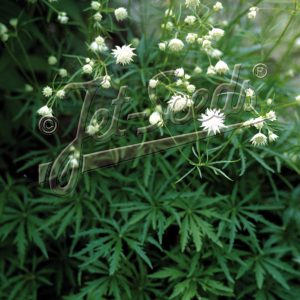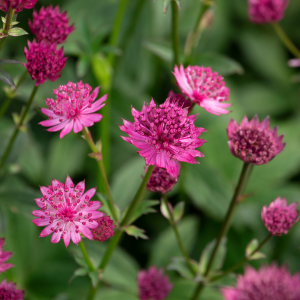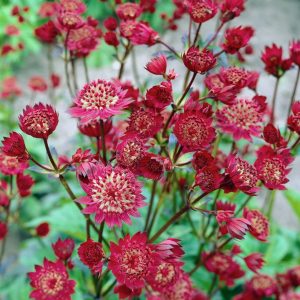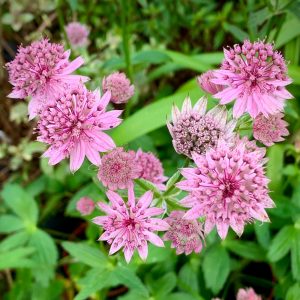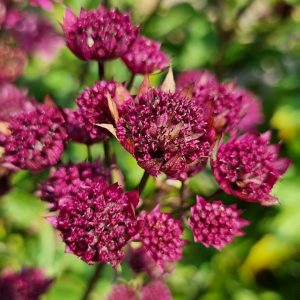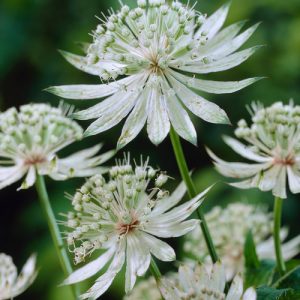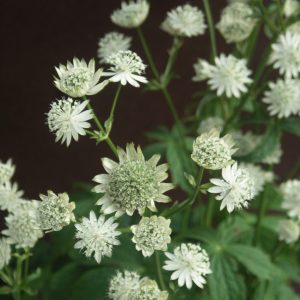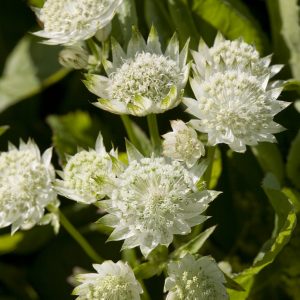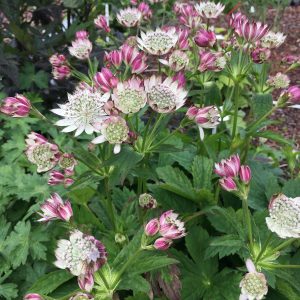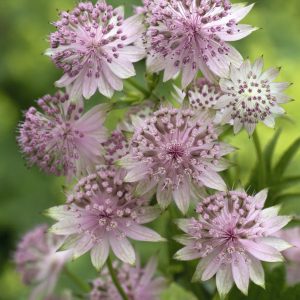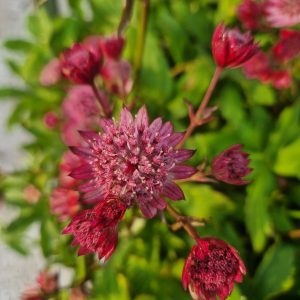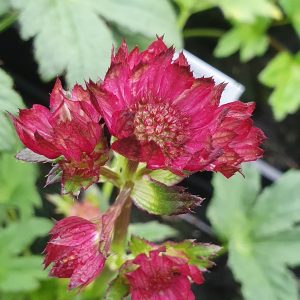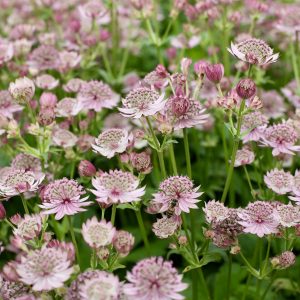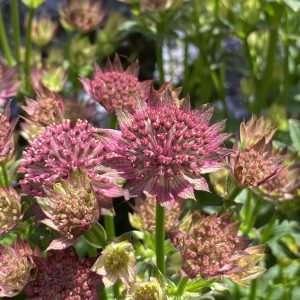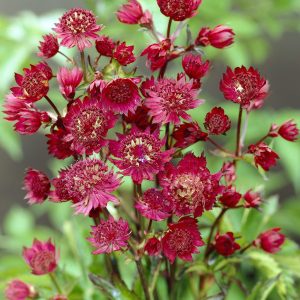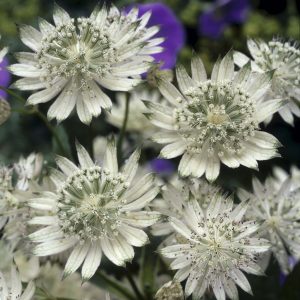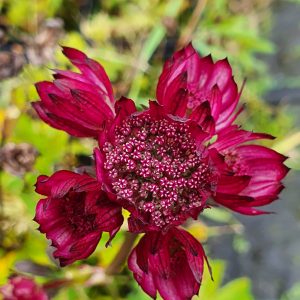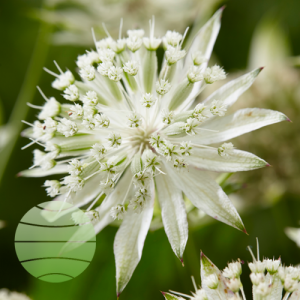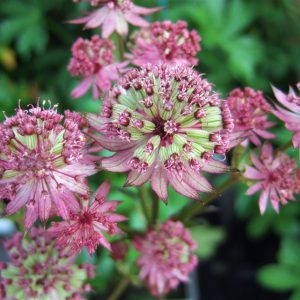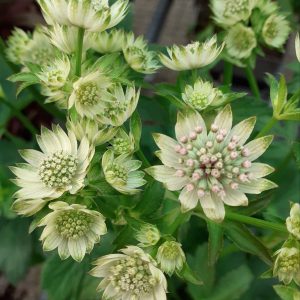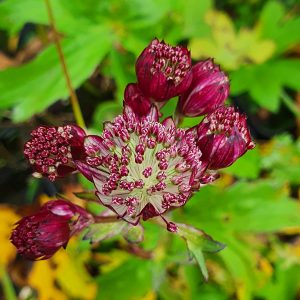Selecting the Right Location
Astrantia thrives in partial to full shade, making it an excellent choice for woodland gardens or areas with filtered sunlight. This plant does well with morning sun and afternoon shade, providing it protection from the intense midday sun.
Soil Preparation
Enhance the soil with organic matter before planting. Incorporate well-rotted compost or manure to improve soil fertility and structure. Aim for a slightly acidic to neutral soil pH between 6.0 and 7.0, as Astrantia prefers soils that are not too alkaline.
Planting Time
Optimal planting times are early spring or early autumn. This allows the plant to establish itself before the extremes of summer heat or winter cold, promoting a healthier start.
Planting Depth
When planting, dig a hole slightly larger than the root ball of the Astrantia plant. Position the plant so that the crown is level with the soil surface, preventing crown rot and encouraging healthy growth.
Watering
Keep the soil consistently moist, especially during the initial growing season when the plant is establishing its roots. While Astrantia becomes moderately drought-tolerant once established, regular watering is still beneficial, particularly during dry spells.
Mulching
Apply a layer of organic mulch around the base of the plant. This helps retain soil moisture, suppress weeds, and regulate soil temperature, contributing to the overall health of the plant.
Fertilising
Use a balanced, slow-release fertiliser in spring to provide essential nutrients without promoting excessive growth. Avoid high-nitrogen fertilisers, as Astrantia tends to favour a balanced nutrient profile for optimal development.
Pruning
Regular deadheading of spent flowers encourages continuous blooming throughout the growing season. In late autumn or early spring, cut back the entire plant to a few inches above the ground to rejuvenate the plant and maintain a tidy appearance.
Support
Taller varieties of Astrantia may require staking or support to prevent stems from bending or flopping, particularly during periods of heavy rain or wind.
Pest and Disease Management
Astrantia is generally resistant to pests and diseases. Maintaining good garden hygiene is essential, ensuring proper air circulation around the plants to prevent the development of mildew, which can be a common issue in humid conditions.
Division
Divide crowded clumps of Astrantia every 3-4 years to prevent overcrowding and maintain plant vigour. Early spring or autumn is the best time for division when the plant is not actively flowering.
Enjoy the Blooms
Astrantia produces intricate, pincushion-like flowers that attract pollinators such as bees and butterflies. Take the time to appreciate the unique beauty and delicate charm that Astrantia brings to your garden throughout the growing season. Observing and enjoying the blooms contribute to the overall satisfaction of cultivating this captivating perennial.



